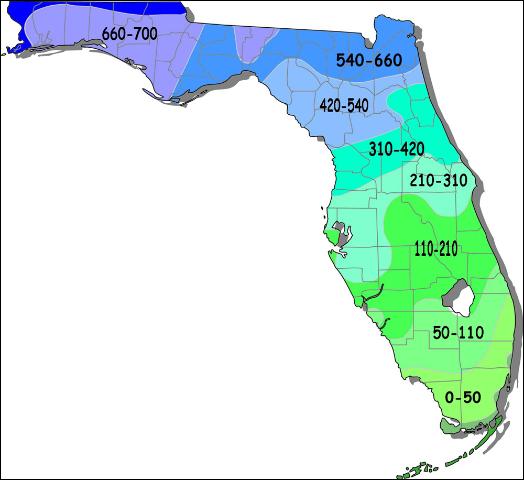
by Matt Lollar | Jan 27, 2016
We may be suffering from the recent low temperatures, but temperate fruit trees such as peaches and apples require a period of cold weather in order to become cold hardy and produce a good crop.
What is Cold Hardiness?
Cold hardiness is the ability of a plant to survive low temperatures. However, every cold event is fairly unique with variables such as when the low temperatures occur (early vs. late winter), how quickly the temperature drops, the temperatures in the days leading up to the event, and the length of time the low temperatures are sustained.
Cold Acclimation
Cold acclimation is the development of freezing tolerance in plants. Three fall environmental factors contribute to cold acclimation in fruit trees. Plant will develop 10 to 15 degrees of cold tolerance when the leaves sense shorter day lengths. Metabolic activity is increased when days are short and temperatures are between 60°F days and 40°F nights. The second factor occurs when lows reach the 20s, which can make trees up to 10 degrees hardier. The final factor occurs when temperatures dip to near zero, which fortunately for us does not occur very often.
Trees remain hardy during the winter as long as temperatures remain fairly stable. However, de-acclimation occurs in reaction to warm temperatures. This explains the winter flowering which occurred this past December. A cold snap may not injure trees unless it immediately follows a period of mild temperatures.

Florida Average Chill Hours Map – UF/IFAS Extension
Chilling Requirement
The cold weather and gradual cold acclimation are necessary to a tree’s accumulation of chill hours which is necessary for steady fruit yields. Chill hours are the accumulation of hours when temperatures are between 32°F and 45°F. The yearly average chill hour accumulation in Northwest Florida is between 660 and 700 hours. The apple varieties recommended for our area (‘Anna’, ‘Dorsett Golden’, and ‘TropicSweet’) have a chilling requirement of 250 to 300 hours. Some of the peach varieties recommended for our area (‘Flordacreast’, ‘Flordaking’, and ‘Gulfsnow’) have a chilling requirement of 350 to 400 hours. Please note the risk of planting these varieties because their chilling requirements are lower than our average chill hour accumulation. The varieties listed are for example, but other available varieties are suitable for our area.
Whether you like winter weather or not, just remember the satisfaction of eating fresh fruit in the summer. To track this year’s chill hours from the warmth of your home, please visit the AgroClimate tool at http://agroclimate.org/tools/Chill-Hours-Calculator/.
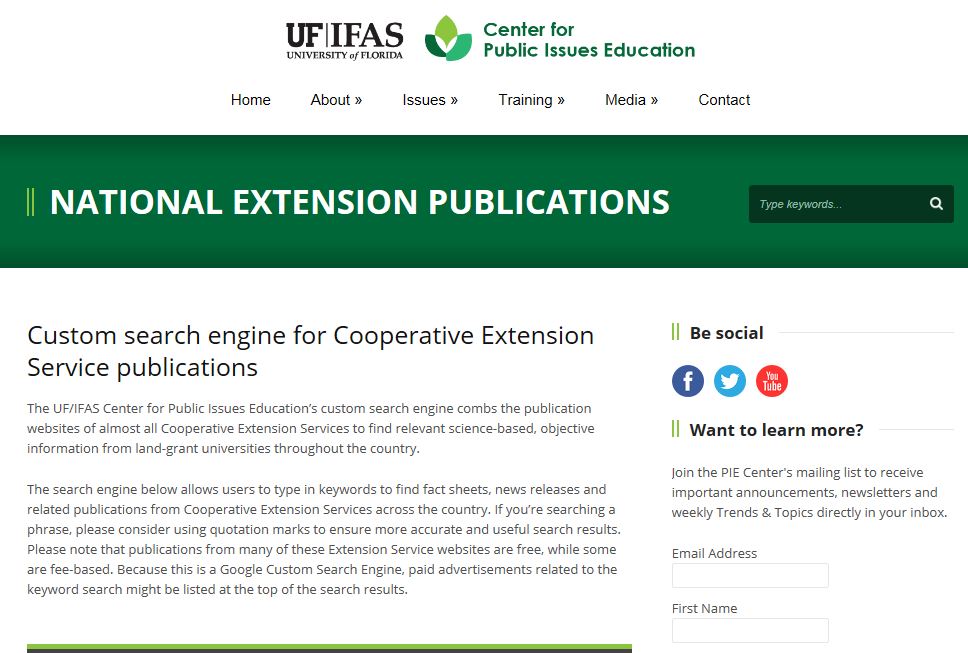
by Mary Salinas | Jan 27, 2016
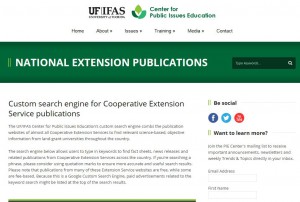 So often, we are searching for research-based information to solve our gardening questions but the search engine turns up all sorts of sites that we may or may not know and trust. There is now a better way to search for reliable gardening information from trusted universities. The University of Florida IFAS Center for Public Issues Education just announced on January 22, 2016 a custom search engine for Extension service publications. Many top land-grant universities are participating in this project to bring you facts sheets, news releases and other publications that are relevant and science-based.
So often, we are searching for research-based information to solve our gardening questions but the search engine turns up all sorts of sites that we may or may not know and trust. There is now a better way to search for reliable gardening information from trusted universities. The University of Florida IFAS Center for Public Issues Education just announced on January 22, 2016 a custom search engine for Extension service publications. Many top land-grant universities are participating in this project to bring you facts sheets, news releases and other publications that are relevant and science-based.
This valuable tool is not just for gardening information but for any topic that you would expect to be addressed by a university or Extension such as oysters, healthy living and raising chickens.
I have used it a few times to test it out and it works marvelously! Try it yourself!
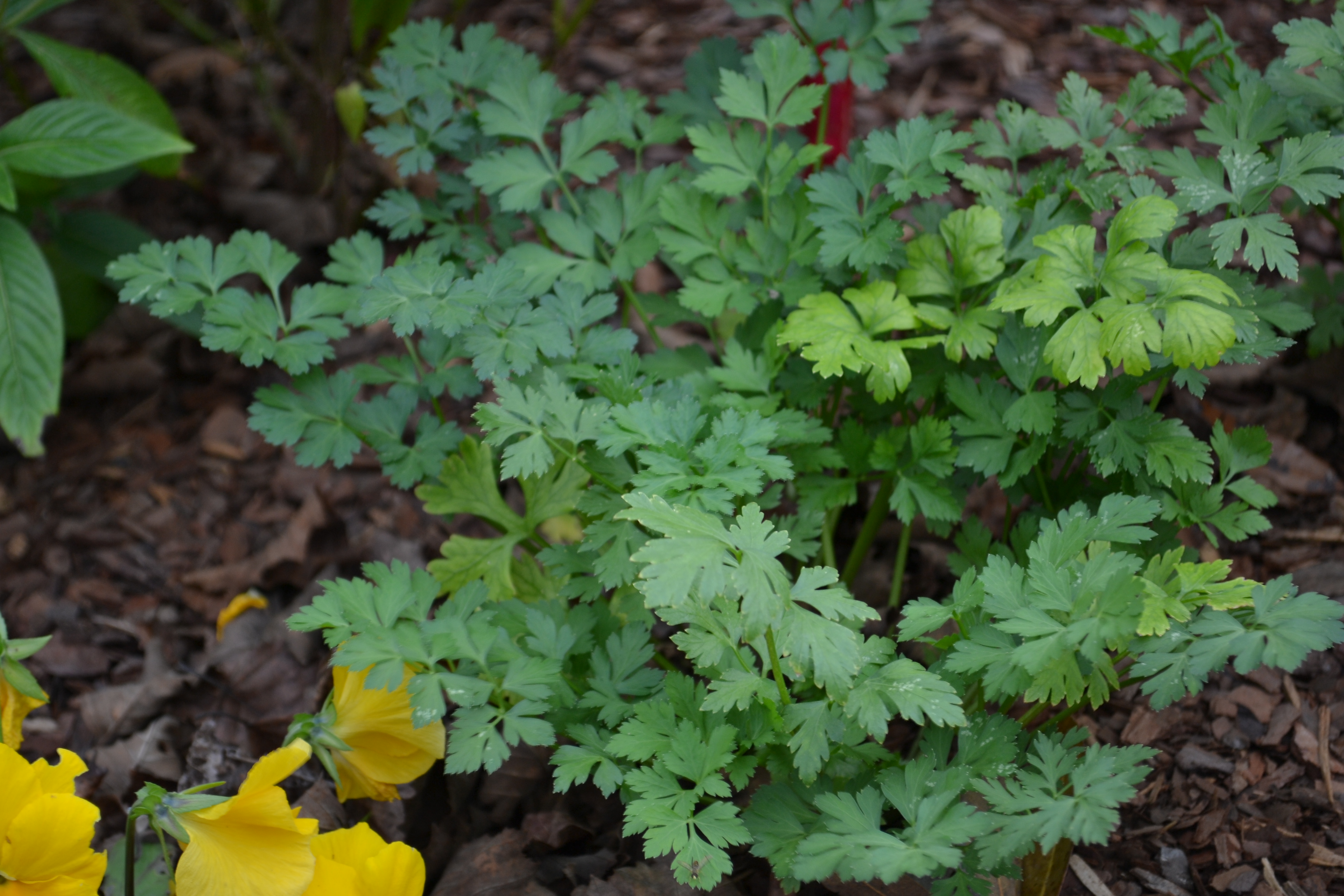
by Beth Bolles | Jan 27, 2016
Parsley is one of the most well-known herbs, and if you missed the fall planting, there is still time to choose a preferred selection for late winter/spring planting.
An herbaceous biennial, parsley is an easy herb for containers or small garden spaces. You may purchase a small pot at the nursery or grow from seed. Realize that seeds do best when soaked in warm water for 24 hours prior to planting and may not germinate for several weeks. Be sure to mark the area well so you remember not to overplant with another herb or vegetable.
Choose an area or soil that allows for good drainage and full sun in the cooler months. During the heat of summer, parsley does prefer a little break from afternoon sun. Consider planting in pots so plants can be moved during the hottest months. Plants will prefer water during times when rainfall is lacking, but the taproot does allow the plant to survive some drought.
There are different types of parsley you may choose but the most common types sold in stores are the curled leaf parsley and the Italian parsley. The Italian parsley has a stronger flavor and holds up a little better during cooking.
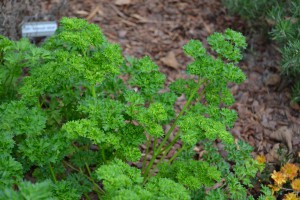
Curled leaf parsley
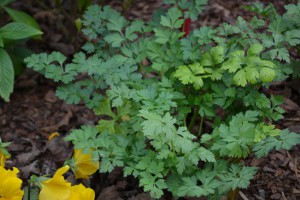
Italian parsley
Parsley is an attractive plant as a garden border or in a mixed container but will likely have a visitor during the warmer season that will feed on the leaves. The black swallowtail butterfly will use parsley as a host plant so plant enough to share with the butterflies.
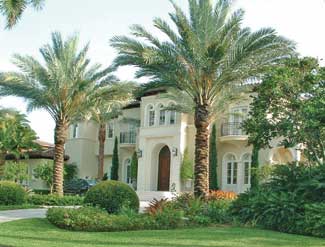
by Sheila Dunning | Jan 20, 2016
 While palms may survive, or even thrive, for years in climates cooler than those to which they are native, eventually they will experience temperatures cold enough to cause injury. Here in Northwest Florida, it was January 2014. Unfortunately, much of the damage was not evident until the summer of 2015. The palms held on with stored food reserves.
While palms may survive, or even thrive, for years in climates cooler than those to which they are native, eventually they will experience temperatures cold enough to cause injury. Here in Northwest Florida, it was January 2014. Unfortunately, much of the damage was not evident until the summer of 2015. The palms held on with stored food reserves.
When cold damage is severe, plant tissues are destroyed and water uptake into the plant may be reduced for years. Many times it is only the protected bud that will remain alive. The stem slowly weakens until it can’t support the weight of the crown and it collapses.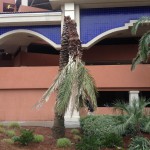
Winter is upon us again. So, if you still have palms in the landscape, be prepared, should we experience some extreme weather. Here’s a reminder of what to do.
One of the most common problems associated with freezes is that the freeze-killed lower portion of the spear leaf is degraded by secondary fungi and bacteria that are always present in our natural environment. Palm owners are often anxious to trim off the damaged leaves following a cold weather event. Avoid the temptation to remove these fronds until danger of additional freezes has passed. Even dead leaves provide insulation to the critical bud.
As the weather warms, the dead fronds need to be removed from around the bud so that the spear can begin to dry out. Drenching the bud area with a copper fungicide will reduce the secondary microbes. Repeat applications will need to continue as the palm leaves develop. Copper fungicides, unlike other fungicides, are active against bacteria and fungi. Be cautious to not use a copper nutrient spray rather than a fungicide. Delay fertilizer application until new fronds have developed. The best analysis for palms is 8-2-12 + 4Mg. Utilization of proper palm fertilization can improve cold hardiness of palms.
Palms damaged by cold can still show symptoms six months to a year following a freeze. New leaves in the spring may appear mis-shaped. Usually the palm will outgrow the damage. However, sometimes the palm loses its ability to take up water. If there is a sudden collapse of the fronds in the crown during the first hot days, the palm may die. There is nothing that can be done to save the palm.
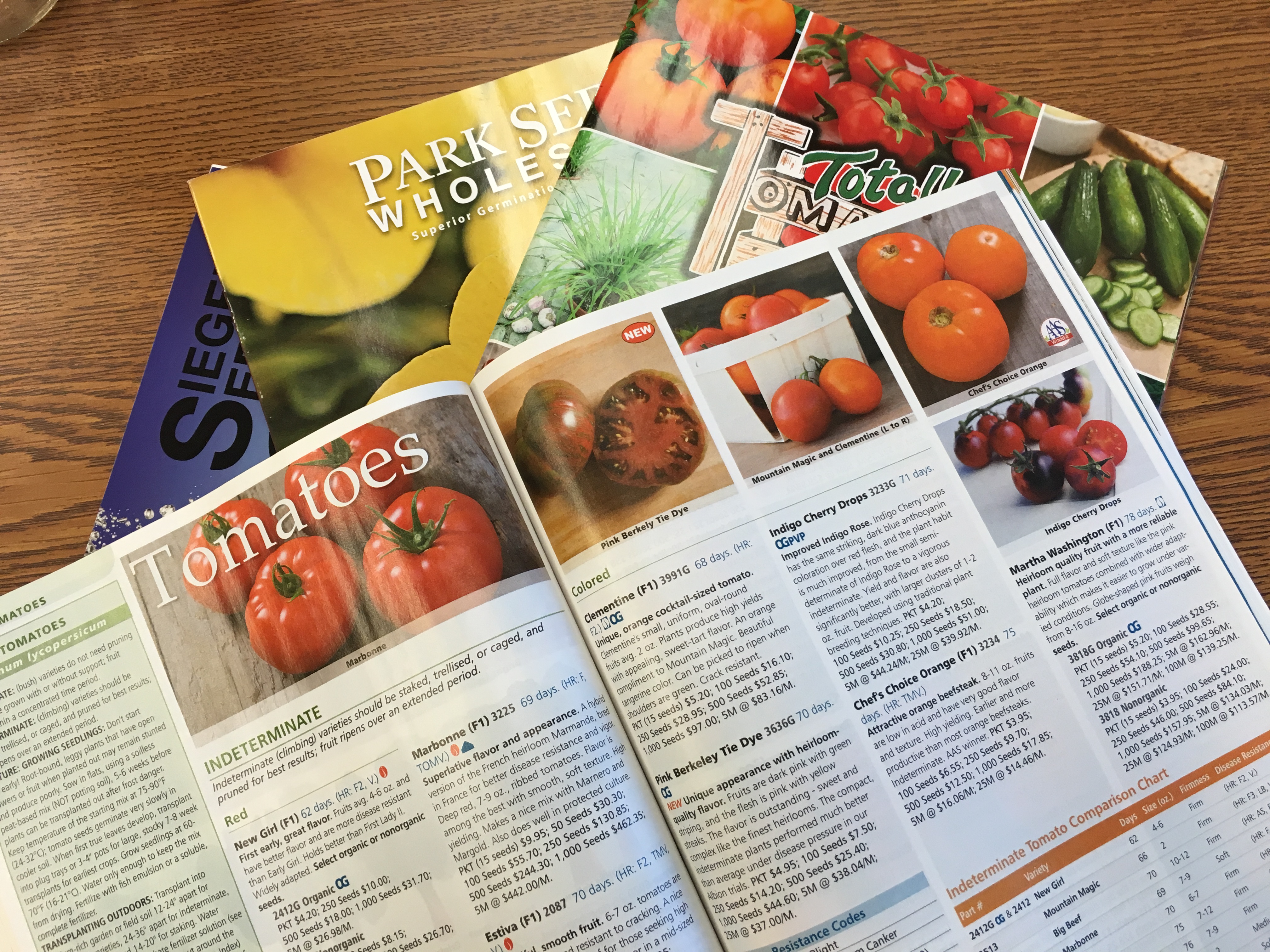
by Blake Thaxton | Jan 20, 2016
It is cold right now…at least it is this week. Even though the winters in northwest Florida do not have consistent cold temperatures, it is not warm enough to grow warm season vegetables all year around. The cold spells come and go but will soon be gone and spring will have sprung. With spring comes birds chirping, flowers blooming, and spring vegetable gardening. Now is the time to begin to prepare for what is ahead. Here are a few things to begin to think about before the work begins:
- Variety Study – This is a great time of year to sink into a seed catalog and pick out the different vegetables and fruits to try this year. Make sure to explore University of Florida/IFAS recommended varieties before making final selections. Think of problems that have occurred in past years and search for varieties that tolerate these conditions. Look through the Florida Vegetable Guide to see recommended varieties.
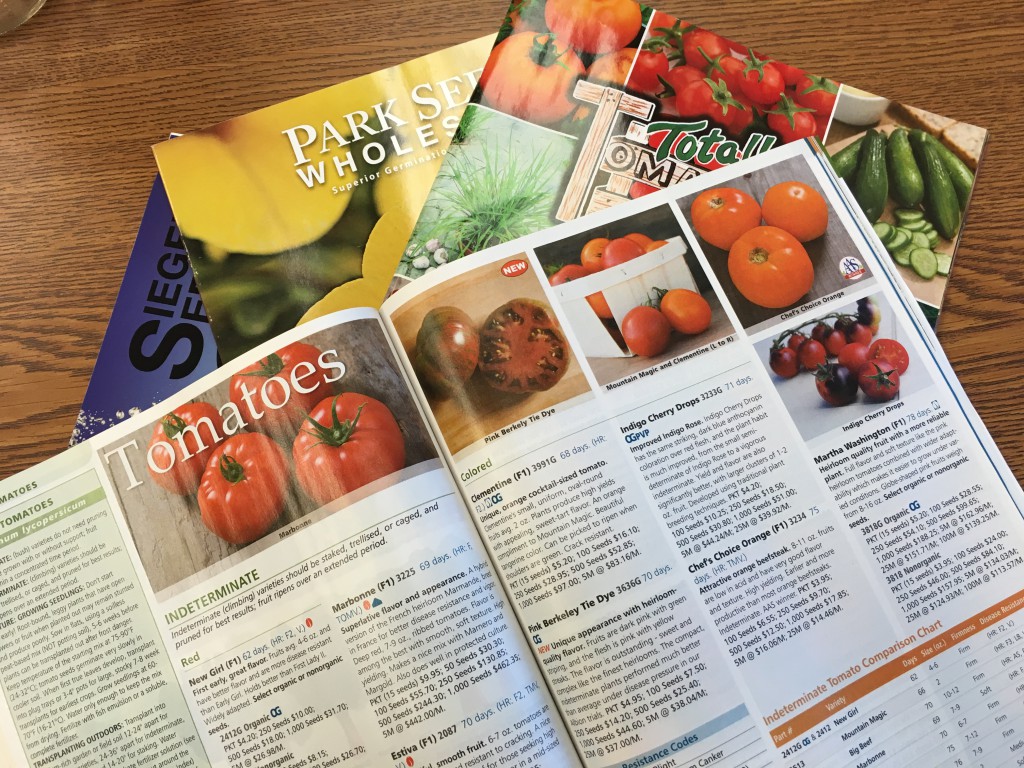
Seed Catalogs.
- Seed Searching – Recommended varieties are not always available at the local seed and feed store and sometimes take a little bit of searching. Of course, the internet can assist greatly in finding desired varieties. A simple search engine inquiry could help in locating and purchasing desirable selections.
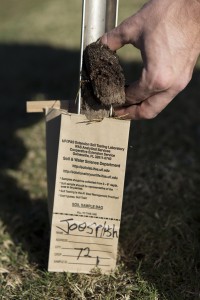
A man taking a soil sample with an auger. UF/IFAS Photo by Tyler Jones
- Soil testing – Soil testing is the cornerstone of having a healthy garden that has been fertilized correctly. Although it would not be appropriate to put out fertilizer this early before the crop, the pH should be adjusted through liming if there is an indicated need on the soil test. This will give time for the pH to begin to adjust before the crops are planted.
- Starting transplants – Another activity that can begin before the actual planting in the garden takes place is seeding inside. Transplants are vegetable and fruit seedlings that begin in potting soil in small containers. This can happen in make shift containers made out of Styrofoam coffee cup with drainage holes or multi celled commercial plastic trays. Seeds can be started in the house and moved inside and out of the climate control depending on the weather or in a greenhouse. Wherever they are, they need to be in high light conditions to prevent plants from becoming stretched and weak. Learn more about Starting the Garden with Transplants.
Now It’s time to start thinking of consistent warm days. The vegetable garden tasks will be overwhelming soon enough. Go ahead and get an early start with some of the winter tasks of spring vegetable gardening.












